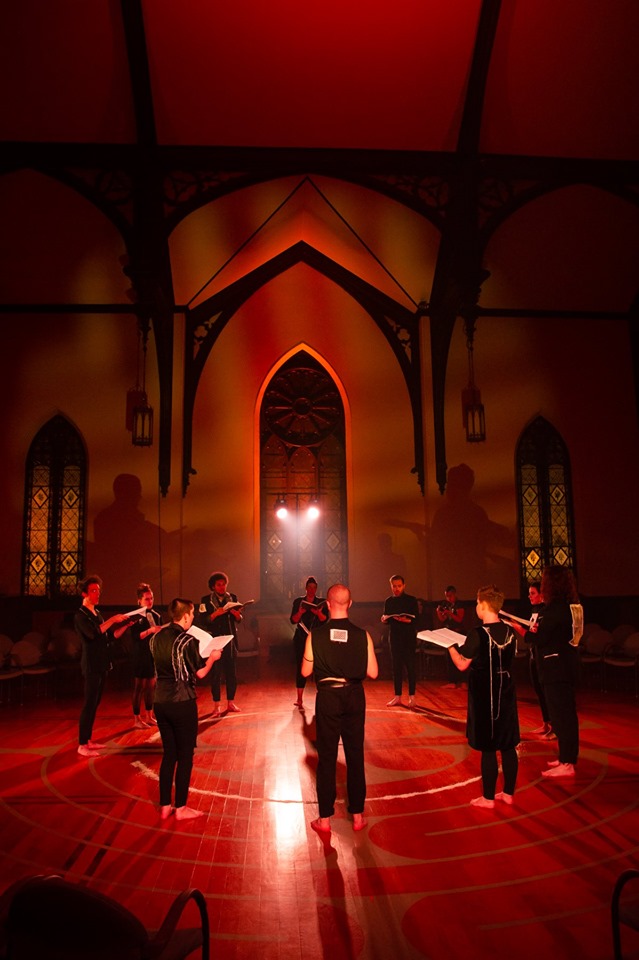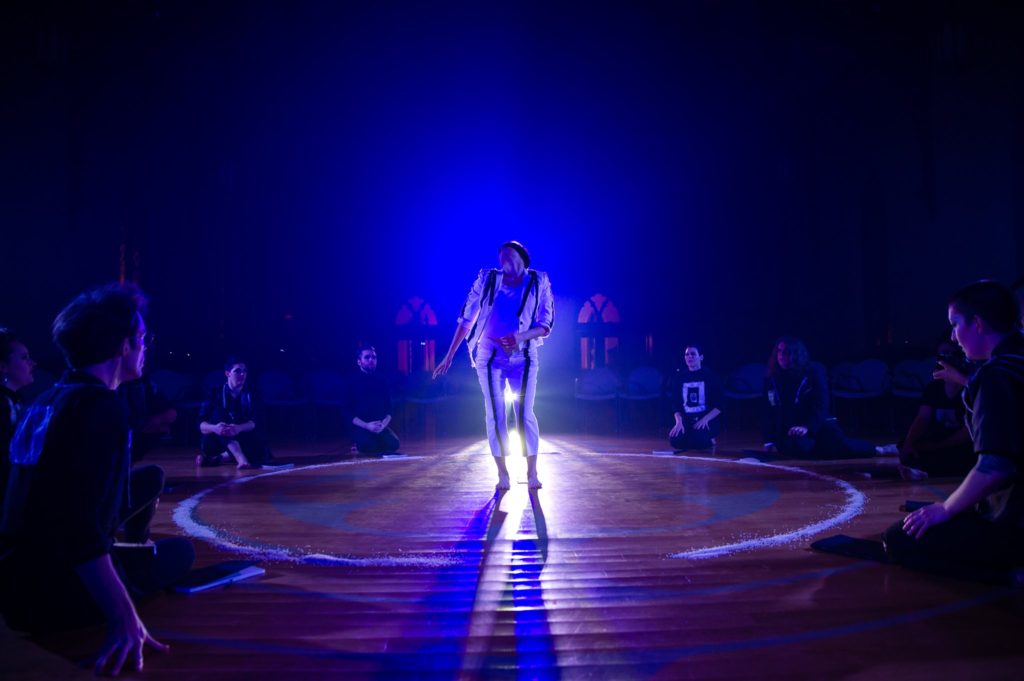
by Jeff Grygny
“The sound of the voice and the music is like a visual
landscape. It’s not something you can put on a table and mathematically tear
apart and have it make sense.”
Michael
Stipe
According to the historian Plutarch, in the reign of the emperor Tiberius (14-37 CE, by the way), sailors heard a voice across the sea crying “Great Pan is dead.” This strange story has often been interpreted as the pagan world acknowledging the beginning of a new epoch: the death of Pan (eros) means the end of nature’s rule on earth and the dawn of the spiritual age of Christ (logos). Similarly, The Sibylline Prophesies, depicting the voices of seers predicting the virgin birth of Jesus, were popular during the first centuries of the Christian era; they gave the new religion the authority of pagan wisdom. Now, two thousand years later, an extraordinary performance brings eros and logos into a reverent, if sometimes fraught, conversation.
In Utterance, Ancient Prophesies/Modern Revelations, Milwaukee Opera Theatre embarks on another of their inspired collaborations; this time with the vocal ensemble Aperi Animam (whose name means “open your soul’), and Cadance Collective, consisting of two musicians and a dancer. Together, in the cavernous space of Calvary Episcopalian Church, they perform a wondrously ritualistic juxtaposition of Orlande de Lassus’ Renaissance-era setting of the Sibylline Prophecies with Eternal Burning, a contemporary work commissioned for the occasion from local composer/poet Amanda Schoofs.
As gorgeously delivered by Aperi Animam under the music direction of Daniel Koplitz, de Lassus’ songs in praise of the Holy Virgin Mary carry our hearts soaring into the nighttime heavens in the spirit of the best sacred music. Voices and phrases resound and overlap like the celestial singing of myriad angels. Schoofs’ settings of short poems sometimes echo the same notes of yearning, but they also incorporate modern dissonances and raw, breathy sounds; they seem more the productions of bodies of bone and blood than the exhalations of supernatural beings. Her texts, like the prophecies, sanctify motherhood, but there the similarity ends: Schoofs draws deeply on her own experience of pregnancy and birth to chronicle the soul-wrenching experience of life creating life in all its intense, contradictory emotions. The self become many as her body performs mysteries of creation that far predate our rational intellects, sounding the primeval, erotic roots of animal life. There are no literal representations of pregnancy, birth, or infants. Rather, we witness a tenebrous ceremony that partakes of the gestures of the Christian Mass, imagery of Gnosticism and alchemy, psychodrama, and the trappings of a particularly theatrical goth band.
A fine haze gives body to a space framed by tall Gothic-arched windows and empty but for circles of chairs open to the four directions. High-tech lighting by local genius Antishadows sculpts the atmosphere into volumes that shift, change hue, and project abstract shapes in austere stately rhythms to create a wide variety of moods. Black-clad figures emerge from the surrounding darkness, carrying books. Their clothing is adorned with rags bearing esoteric emblems. There is great variety in body shape, hairstyle choices, and gender coding, but they all look determinedly goth, with liberal use of black eyeliner. The Cadance Collective weaves in and out of the circle, carrying their flute and cello; Christina Wagner, the dancer, makes her entrance as the sole performer in white, but her angular movements suggest nothing like the classic Virgin’s serenity. Symbolic actions unfold in a measured pace: the drawing of a circle on the floor with rice poured from a seemingly inexhaustible vase; a milky fluid transferred back and forth between two cups; vestments donned. Three performers representing “the trinity of female identity” interact with each other and the chorus in scenes that seem laden with narratives we can feel more than follow with our intellects. We are like like initiates in some secret cult, washed over in music both earthy and divine.

An elegant program booklet helpfully gives us the texts of all the songs, with titles that obliquely hint at their meanings. Schoofs’ lyrics are vivid with bodily imagery: burning, breath, flesh, lungs, voice, “milk, filth, and blood.” The phrase “Feel everything” occurs twice, and a section called “A Revelation” has only three lines:
With flesh
All things
Have beauty
The performance alternates between modern and Renaissance songs, enacting an unspoken dialog between their very different worlds, the sense of which will be different for each hearer. While one voice struggles to “feel everything,” the other celebrates the miracle of the incarnation. The tension between earth and heaven, immanence and transcendence, is almost palpable. After two millennia of trying to ascend to the sky, the animal body here pulses in all its carnality. And this is not the sublimated eros of Botticelli; this eros is wild, fierce, burning, and dangerous—like the great god Pan, full of ecstasy, derangement, and wisdom. Stage director Danny Brylow’s constant circling centripetal and centrifugal movements, exchanges and transformations, are like symbolic enactments of the most primeval of all rites: the dance of chromosomes and cells within the womb’s magic gestatory circle. These actions materialize and sacralize the space where personal experience meets impersonal biology in the theater of embodied experience.
This mystery play, which, like the ancient rites of Eleusis, reveals cosmic truths to its initiates, played its last performance—rather fittingly—on Halloween night. Complex, daring, exquisite in conception and impeccable in execution, it was a rare gift to our performing arts community. Those who witnessed it will not soon forget it.
Milwaukee Opera Theatre
in collaboration with Aperi Animam and Cadance Collective
presents
Utterance: Ancient Prophesies/Modern Revelations
October 29 – 31

DeLassus’ music is exquisite & uniquely composed to contrast to “body in the world” rhythmic expression. Such a great choice.
I only know DeLassus from my public school choirs. Your review means more to me from having had the body experience of singing DeLassus in school. Thank you public schools & Dr. Jeff Grygny.